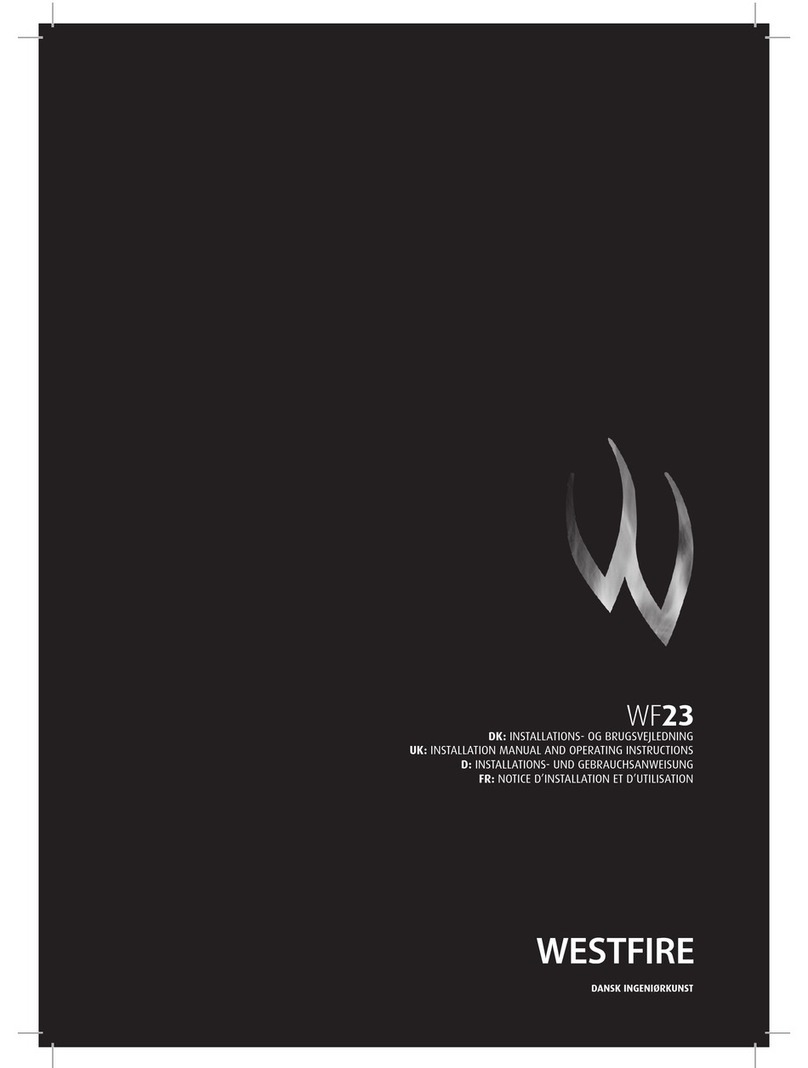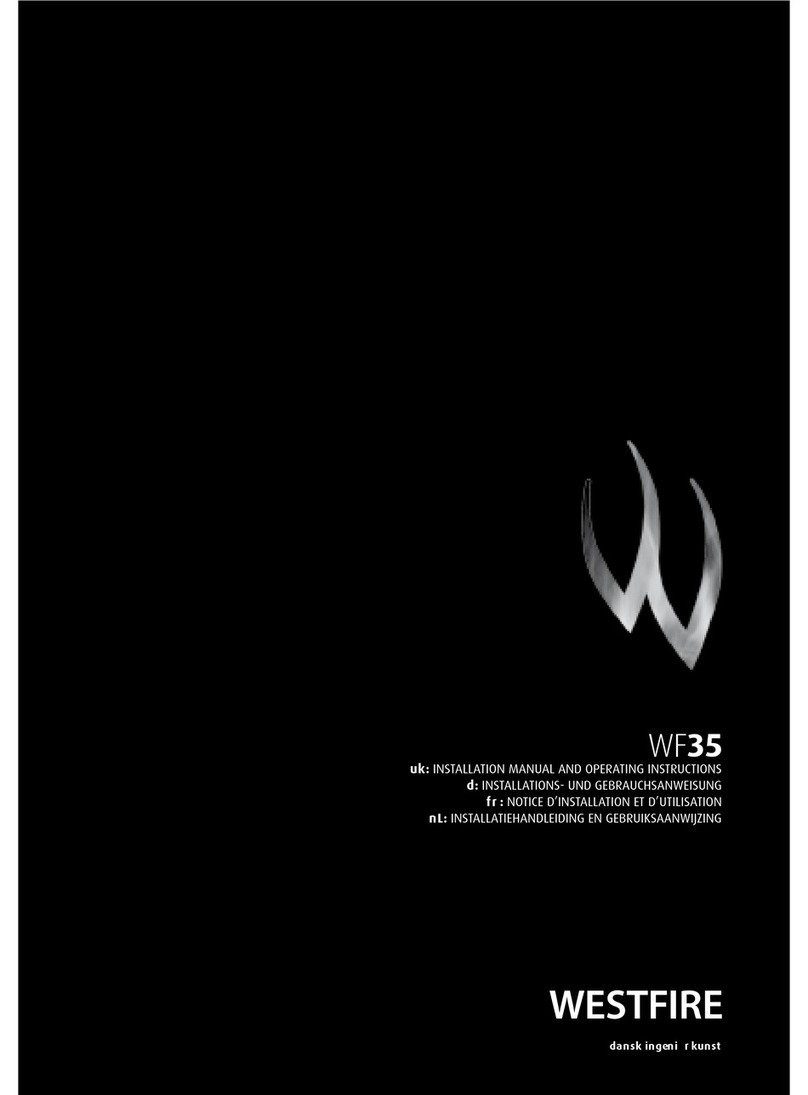
9 of 32
WESTFIRE ·WF35
9 of 32
Each installation is unique to the property so it is not possible to give details to suit every setting. The installation must comply
with local and national Building Regulations and be made using best practice construction methods.
Many fireplace openings have a supporting lintel. Do not remove without supporting the remaining structure of the
building. Do not support the structure with the flue system or the appliance.
The flue system must be fully installed and supported according to the manufacturer’s instructions BEFORE the appliance is
installed.
1a Take care when installing the appliance. Careless handling and use of tools can damage the finish and/or area.
1b Remove all internal components before proceeding. Manoeuvring this appliance is into the builders opening
will require 2 people.
1c Check the operation of the Secondary and primary air slider to ensure it operates smoothly . Do not fit the appliance if
the sliders are stuck.
Appliance
It is recommended that the appliance is secured into the hearth, providing secure positioning for the stove. There are 4 holes
in the base of the outer convection box to be able to secure the base of it using masonry anchor bolts.
Load bearing base
Ensure that the bottom of the convection box is installed on a load bearing with the strength to support the weight of the insert
and the chimney. The insert can be loaded maximum 100 kg of chimney. The load bearing must not prevent the convection
air ventilate the area between the insert and recess.
Hearth plate
Due to the risk of falling embers, a flammable floor must be protected by a hearth plate. It must extend 300 mm in front of the
stove and 100 mm on each side of the stove, or have a 200 mm extension on each side of the opening. The hearth plate can
consist of natural stone, concrete, metal plate or glass, consult the Building regulations.
Fixing to the hearth
2a It is recommended that this appliance is fixed to the hearth. This must be done before connecting the flue.
2b Slide the appliance into the opening taking care not to damage the hearth. Check that the fit is suitable and the appliance
is in the correct position.
2c Mark drill holes on the hearth
2d Carefully remove the appliance from the opening.
2e Using a masonry bit, drill corresponding holes in the hearth and fit the masonry anchor bolts. (Not supplied)
2f The appliance is now ready to be secured to the hearth after the flue system has been connected.
Connecting the existing flue
4a The flue must be installed in accordance with the manufacturers instructions.
4b If the appliance is installed on an unlined, masonry flue, not recommended: — Fit a non-combustible closure plate to
locate the first section of single wall flue pipe from the appliance to the old system. — Making the connection as with a
flue liner system.
4c Do not connect the stove or flue system into large voids that could exist in older chimney systems. If this is the case
consider using a flue lining system or closure plate to improve the operation of the appliance. Lining a large void around
the stove with an insulating material, i.e. rockwool, is recommended. Before lifting the appliance into position on the
hearth connect the Flue Liner/Pipe to the Flue Collar
Connection to Flue Liner/Pipe
Fit flue collar to flue liner /connecting pipe prior to putting stove into position
5a Slide the appliance back into the opening taking care not to damage the hearth. Check that the fit is suitable and the
appliance is in the correct position.
5b Lower the flue collar into position above the appliance.
5c Secure the flue collar in place by fixing it to the Flue Flange with the bolts, nuts and washers provided,
5d The appliance can now be secured to the hearth using 1 x 6mm x 100mm (minimum) countersunk screws.
5e Finish the installation.
INSTALLATION INSTRUCTIONS































